Using Microsoft Chart In SharePoint 2007
As promised, I have been busy creating a custom web part to display Microsoft Charts within my SharePoint reporting dashboard. Before you even think of wanting to use Microsoft Chart in a SharePoint environment, there are a few boring tasks you need to carry out beforehand:
Step 1: Copy Charting Files To SharePoint
- Download Microsoft Chart here.
- Ensure the System.Web.DataVisualization.dll is in the GAC of your SharePoint server. If not, go to your Microsoft Chart installation directory (C:\Program Files\Microsoft Chart Controls\Assemblies). You will find all the dll’s here.
- Copy the charting images from the MS Chart project directory.
 4. On your SharePoint server, go to the 12 hive and create a new folder called “MicrosoftChartControls” in the Images directory.
4. On your SharePoint server, go to the 12 hive and create a new folder called “MicrosoftChartControls” in the Images directory.
Step 2: Modify SharePoint’s Web.Config File
- Add “System.Web.DataVisualization” to the SafeControls section.
<SafeControls>
...
...
<SafeControl Assembly="System.Web.DataVisualization, Version=3.5.0.0, Culture=neutral, PublicKeyToken=31bf3856ad364e35" Namespace="System.Web.UI.DataVisualization.Charting" TypeName="*" Safe="True" AllowRemoteDesigner="True"/>
</SafeControls>
- Add the “ChartImg.axd” path to httpHandlers section.
<httpHandlers>
...
...
<add verb="*" path="ChartImg.axd" type="System.Web.UI.DataVisualization.Charting.ChartHttpHandler, System.Web.DataVisualization, Version=3.5.0.0, Culture=neutral, PublicKeyToken=31bf3856ad364e35" validate="false"/>
</httpHandlers>
- Add a new AppSetting after the </system.workflow.componentmodel.workflowcompiler> tag. As you can see, this AppSetting contains the URL to where our charting images are stored.
</System.Workflow.ComponentModel.WorkflowCompiler>
<appSettings>
<add key="ChartImageHandler" value="storage=memory;timeout=20;URL=/_layouts/Images/MicrosoftChartControls/" />
</appSettings>
- Lastly, ensure you add your own custom web part charting control to the SafeControls section as I have done.
<SafeControl Assembly="MOSSCharts, Version=1.0.0.0, Culture=neutral, PublicKeyToken=d463a6b3aa294272" Namespace="MOSSCharts" TypeName="*" Safe="True" AllowRemoteDesigner="True" />
If you still have problems with SharePoint failing to recognise the charting API, view this MSDN Forum posting.
My Custom Chart Example – Bar Chart
I decided it would be more useful to create a charting web part that would display graphical data from a database, instead of using randomised or hard coded values. My charting web part contains the following properties:
- Chart Title
- Database Connection String – in the real world you wouldn’t include this property. But it just makes it so much more easier to change database connection strings.
- Series 1 Query – will contain a SQL Query based on the results you want returned.
- Series 1 X Data – the column data you want displayed in the Bar Chart X Axis.
- Series 1 Y Data - the column data you want displayed in the Bar Chart Y Axis.
Based on the properties above, your chart will look something like this:
This is how you can create the Bar Chart web part:
using System;
using System.Collections.Generic;
using System.Linq;
using System.Text;
using System.Web.UI;
using System.Web.UI.DataVisualization.Charting;
using System.Drawing;
using System.Data;
using System.Data.Sql;
using Microsoft.SharePoint;
using System.Web.UI.WebControls.WebParts;
using System.Data.SqlClient;
using System.ComponentModel;
using Microsoft.SharePoint.WebPartPages;
using System.Web.UI.WebControls;
namespace MOSSCharts
{
public class BarChart : Microsoft.SharePoint.WebPartPages.WebPart
{
private string chartName;
[WebBrowsable(true), Personalizable(true)]
[Category("Chart Details")]
[FriendlyName("Chart Title")]
public string ChartName
{
get { return chartName; }
set { chartName = value; }
}
private string connectionString;
[WebBrowsable(true), Personalizable(true)]
[Category("Database Details")]
public string ConnectionString
{
get { return connectionString; }
set { connectionString = value; }
}
private string querySeries1;
[WebBrowsable(true), Personalizable(true)]
[Category("Series 1 Data")]
[FriendlyName("Series 1 Query")]
public string QuerySeries1
{
get { return querySeries1; }
set { querySeries1 = value; }
}
private string xColumnDataSeries1;
[WebBrowsable(true), Personalizable(true)]
[Category("Series 1 Data")]
[FriendlyName("Series 1 X Data")]
public string XColumnDataSeries1
{
get { return xColumnDataSeries1; }
set { xColumnDataSeries1 = value; }
}
private string yColumnDataSeries1;
[WebBrowsable(true), Personalizable(true)]
[Category("Series 1 Data")]
[FriendlyName("Series 1 Y Data")]
public string YColumnDataSeries1
{
get { return yColumnDataSeries1; }
set { yColumnDataSeries1 = value; }
}
protected override void CreateChildControls()
{
SPSecurity.RunWithElevatedPrivileges(delegate()
{
try
{
//**************************************************************
//Create Connection String
//**************************************************************
SqlConnection sqlConn = new SqlConnection(ConnectionString);
//**************************************************************
// Create Chart Control
//**************************************************************
Chart barChart = new Chart();
barChart.Width = 412;
barChart.Height = 296;
//Specify palatte to use
barChart.Palette = ChartColorPalette.BrightPastel;
if (!String.IsNullOrEmpty(ChartName))
{
Title t = new Title(ChartName, Docking.Top, new System.Drawing.Font("Trebuchet MS", 14, System.Drawing.FontStyle.Bold), System.Drawing.Color.FromArgb(26, 59, 105));
barChart.Titles.Add(t);
}
//Create chart area
barChart.ChartAreas.Add("ChartArea1");
// Show as 3D
barChart.ChartAreas["ChartArea1"].Area3DStyle.Enable3D = true;
// Show columns as clustered
barChart.ChartAreas["ChartArea1"].Area3DStyle.IsClustered = false;
// Show X axis end labels
barChart.ChartAreas["ChartArea1"].AxisX.LabelStyle.IsEndLabelVisible = true;
// Set rotation angles
barChart.ChartAreas["ChartArea1"].Area3DStyle.Inclination = 15;
barChart.ChartAreas["ChartArea1"].Area3DStyle.Rotation = 20;
//**************************************************************
// Add series data to chart
//**************************************************************
//Create Series 1 if there is data
if (!String.IsNullOrEmpty(XColumnDataSeries1) && !String.IsNullOrEmpty(YColumnDataSeries1) && !String.IsNullOrEmpty(QuerySeries1))
{
//Add a new series
barChart.Series.Add("Series1");
// Set series chart type
barChart.Series["Series1"].ChartType = SeriesChartType.Column;
// Draw as 3D Cylinder
barChart.Series["Series1"]["DrawingStyle"] = "Cylinder";
barChart.Series["Series1"].BorderColor = Color.FromArgb(26, 59, 105);
barChart.Series["Series1"].Color = Color.CornflowerBlue;
barChart.Series["Series1"].BackSecondaryColor = Color.Navy;
barChart.Series["Series1"].BackGradientStyle = GradientStyle.DiagonalLeft;
barChart.Series["Series1"]["PointWidth"] = "0.8";
SqlCommand sqlCmdSeries1 = new SqlCommand(QuerySeries1, sqlConn);
barChart.DataSource = sqlCmdSeries1;
barChart.Series["Series1"].XValueMember = XColumnDataSeries1;
barChart.Series["Series1"].YValueMembers = YColumnDataSeries1;
}
barChart.DataBind();
Controls.Add(barChart);
}
catch (Exception ex)
{
Label lblError = new Label();
lblError.Text = "An error has occurred. Please ensure you have entered correct chart details";
Controls.Add(lblError);
}
});
}
}
}
The code (above) provides a basis to display a database driven chart within SharePoint. With some further tweaks, your Reporting Dashboard could look something like this:
If you would like the code for some of my other charts displayed within my Reporting Dashboard, please leave a comment.

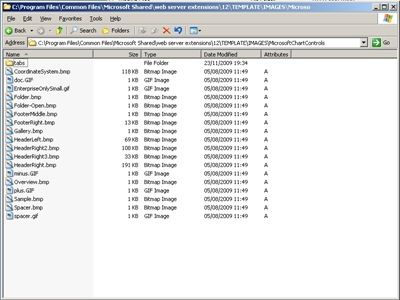
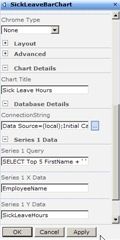

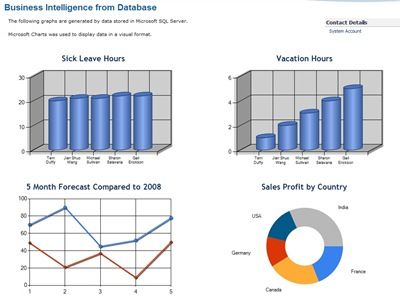


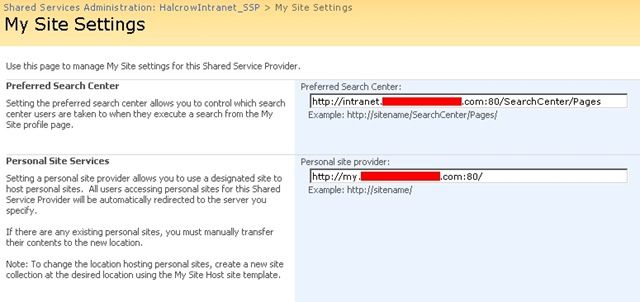
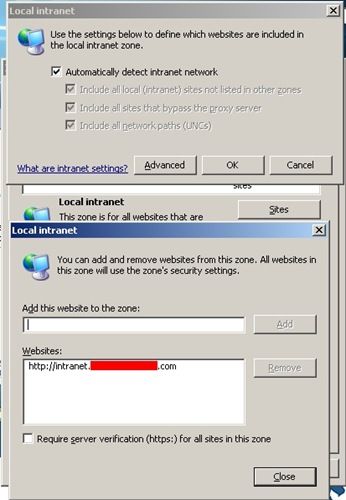
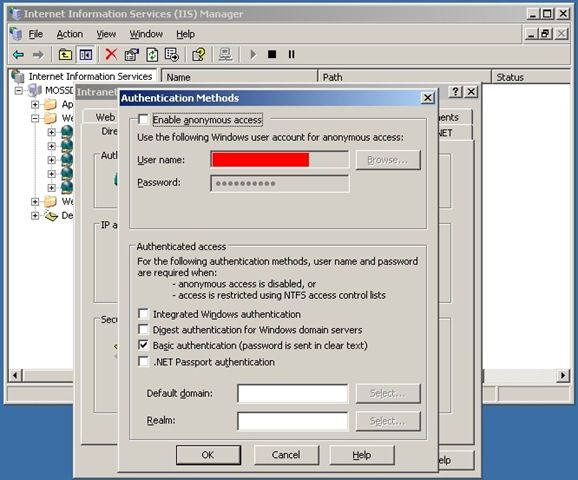

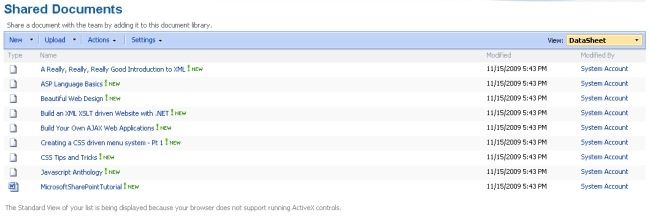
 Last week my blog was offline due to an unfortunate mishap. I won’t go into the details on what happened. I’d rather just forget.
Last week my blog was offline due to an unfortunate mishap. I won’t go into the details on what happened. I’d rather just forget. We have been using Cascading Style Sheets for many years now and it has been a god send to help break us away from table based layouts and create an aesthetically pleasing site. I was quite surprised to find out that the CSS 2.1 standard has been around for 11 years. We have moved on considerably over this duration of time and even though some recent browsers are adopting CSS3 already, why do we continue to use CSS2.1?
We have been using Cascading Style Sheets for many years now and it has been a god send to help break us away from table based layouts and create an aesthetically pleasing site. I was quite surprised to find out that the CSS 2.1 standard has been around for 11 years. We have moved on considerably over this duration of time and even though some recent browsers are adopting CSS3 already, why do we continue to use CSS2.1?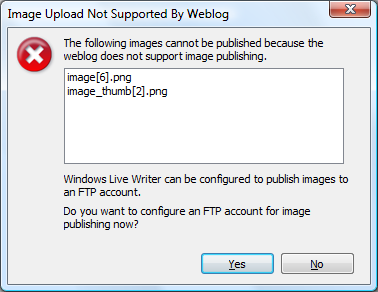
 When the mobile phone first came out, not surprisingly they took the world by storm. Over the years, the mobile has evolved and it was only going to be a matter of time before a phone for a child would be released.
When the mobile phone first came out, not surprisingly they took the world by storm. Over the years, the mobile has evolved and it was only going to be a matter of time before a phone for a child would be released.


